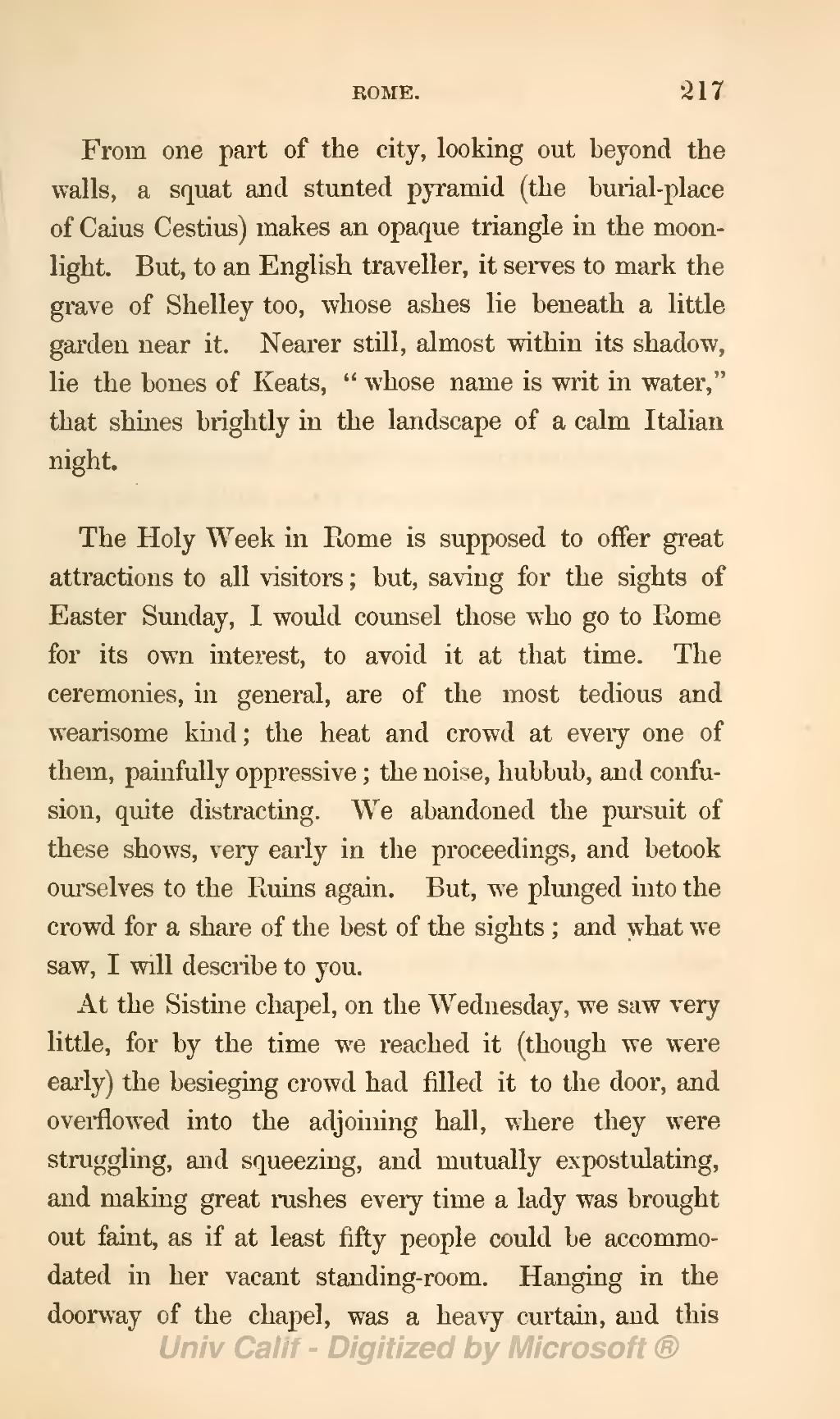From one part of the city, looking out beyond the walls, a squat and stunted pyramid (the burial-place of Caius Cestius) makes an opaque triangle in the moonlight. But, to an English traveller, it selves to mark the grave of Shelley too, whose ashes lie beneath a little garden near it. Nearer still, almost within its shadow, lie the bones of Keats, "whose name is writ in water," that shines brightly in the landscape of a calm Italian night.
The Holy Week in Rome is supposed to offer great attractions to all visitors; but, saving for the sights of Easter Sunday, I would counsel those who go to Rome for its own interest, to avoid it at that time. The ceremonies, in general, are of the most tedious and wearisome kind; the heat and crowd at every one of them, painfully oppressive; the noise, hubbub, and confusion, quite distracting. We abandoned the pursuit of these shows, very early in the proceedings, and betook ourselves to the Ruins again. But, we plunged into the crowd for a share of the best of the sights; and what we saw, I will describe to you.
At the Sistine chapel, on the Wednesday, we saw very little, for by the time we reached it (though we were early) the besieging crowd had filled it to the door, and overflowed into the adjoining hall, where they were struggling, and squeezing, and mutually expostulating, and making great rushes every time a lady was brought out faint, as if at least fifty people could be accommodated in her vacant standing-room. Hanging in the doorway of the chapel, was a heavy curtain, and this

